Multicaloric Effect in 0–3-Type MnAs/PMN–PT Composites
Abstract
:1. Introduction
2. Experimental Details
3. Results and Discussion

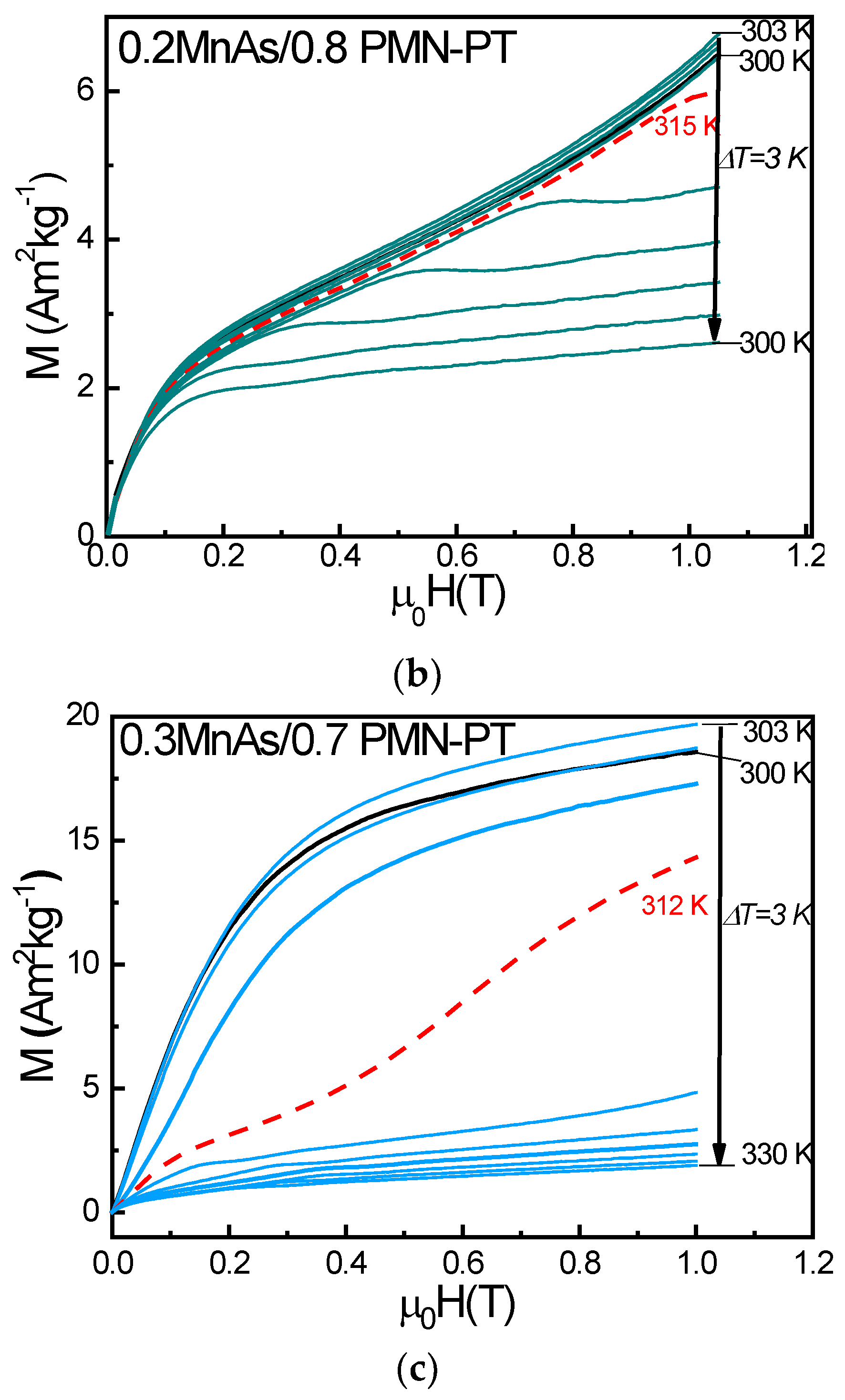
3.1. Electrocaloric Effect
3.2. Model of Multicaloric Effect
- The magnetic field varies according to a sinusoidal law, the diagram of the change in electric intensity corresponds to a meander (the duty cycle is 0.5, the duration of the front/decline is 10%), and the frequency of electric field pulses is 20 times higher than the frequency of the magnetic field (4 Hz and 0.2 Hz, respectively). The case was considered in which the ECE was equal to zero and was equal to that experimentally obtained at a field of 20 kV/cm (100%) and 500% of the experimental (which can be obtained by increasing the intensity).
- The diagram of changes in electric and magnetic strengths corresponds to a meander (with the same parameters as in the first case). The pulse frequencies of the electric and magnetic fields were 4 Hz, while the phase shift between the change in the electric and magnetic fields varied.
- Compilation of FM and FE components with large caloric effects in selected mass ratio and PT temperature (sample with x = 0.3 more suitable for proposed concept).
- Choosing of magnetic and electric field coapplying protocol (phase shifted of coapplied external fields).
- Mechanical interactions between components should be taken into account in the design and research of new composite systems with a large multicaloric response.
Author Contributions
Funding
Institutional Review Board Statement
Informed Consent Statement
Data Availability Statement
Acknowledgments
Conflicts of Interest
References
- Tishin, A.M.; Spichkin, Y.I. The Magnetocaloric Effect and Its Applications; CRC Press: Boca Raton, FL, USA, 2016. [Google Scholar] [CrossRef]
- Cazorla, C. Novel mechanocaloric materials for solid-state cooling applications. Appl. Phys. Rev. 2019, 6, 041316. [Google Scholar] [CrossRef]
- Kholkin, A.L.; Pakhomov, O.V.; Semenov, A.A.; Tselev, A. The Electrocaloric Effect: Materials and Applications; Elsevier: Amsterdam, The Netherlands, 2023. [Google Scholar] [CrossRef]
- Franco, V.; Blázquez, J.; Ipus, J.; Law, J.; Moreno-Ramírez, L.; Conde, A. Magnetocaloric effect: From materials research to refrigeration devices. Prog. Mater. Sci. 2018, 93, 112–232. [Google Scholar] [CrossRef]
- Shao, C.; Amirov, A.A.; Huang, H. A review on different theoretical models of electrocaloric effect for refrigeration. Front. Energy 2023, 17, 478–503. [Google Scholar] [CrossRef]
- Moya, X.; Kar-Narayan, S.; Mathur, N.D. Caloric materials near ferroic phase transitions. Nat. Mater. 2014, 13, 439–450. [Google Scholar] [CrossRef] [PubMed]
- Silva, D.J.; Ventura, J.; Araújo, J.P. Caloric devices: A review on numerical modeling and optimization strategies. Int. J. Energy Res. 2021, 45, 18498–18539. [Google Scholar] [CrossRef]
- Mañosa, L.; Planes, A. Materials with Giant Mechanocaloric Effects: Cooling by Strength. Adv. Mater. 2017, 29, 1603607. [Google Scholar] [CrossRef] [PubMed]
- Vopson, M.M. Multicaloric effect: An outlook. Phys. B Condens. Matter 2017, 513, 103–105. [Google Scholar] [CrossRef]
- Stern-Taulats, E.; Castán, T.; Mañosa, L.; Planes, A.; Mathur, N.D.; Moya, X. Multicaloric materials and effects. MRS Bull. 2018, 43, 295–299. [Google Scholar] [CrossRef]
- Czernuszewicz, A.; Kaleta, J.; Lewandowski, D. Multicaloric effect: Toward a breakthrough in cooling technology. Energy Convers. Manag. 2018, 178, 335–342. [Google Scholar] [CrossRef]
- Gottschall, T.; Gràcia-Condal, A.; Fries, M.; Taubel, A.; Pfeuffer, L.; Mañosa, L.; Planes, A.; Skokov, K.P.; Gutfleisch, O. A multicaloric cooling cycle that exploits thermal hysteresis. Nat. Mater. 2018, 17, 929–934. [Google Scholar] [CrossRef]
- Amirov, A.A.; Tishin, A.M.; Pakhomov, O.V. Multicalorics—New materials for energy and straintronics (Review). Phys. Solid State 2022, 64, 383. [Google Scholar] [CrossRef]
- Hou, H.; Qian, S.; Takeuchi, I. Materials, physics and systems for multicaloric cooling. Nat. Rev. Mater. 2022, 7, 633–652. [Google Scholar] [CrossRef]
- Pyatakov, A.P.; Zvezdin, A.K. Magnetoelectric and multiferroic media. Uspekhi Fiz. Nauk. 2012, 182, 593. [Google Scholar] [CrossRef]
- Spaldin, N.A. Multiferroics: Past, present, and future. MRS Bull. 2017, 42, 385–389. [Google Scholar] [CrossRef]
- Binek, C.; Burobina, V. Near-room-temperature refrigeration through voltage-controlled entropy change in multiferroics. Appl. Phys. Lett. 2013, 102, 031915. [Google Scholar] [CrossRef]
- Wang, Y.; Hu, J.; Lin, Y.; Nan, C.-W. Multiferroic magnetoelectric composite nanostructures. NPG Asia Mater. 2010, 2, 61–68. [Google Scholar] [CrossRef]
- Schmid, H. Multi-ferroic magnetoelectrics. Ferroelectrics 1994, 162, 317–338. [Google Scholar] [CrossRef]
- Gupta, R.; Kotnala, R.K. A review on current status and mechanisms of room-temperature magnetoelectric coupling in multiferroics for device applications. J. Mater. Sci. 2022, 57, 12710–12737. [Google Scholar] [CrossRef]
- Swartz, S.L.; Shrout, T.R. Fabrication of perovskite lead magnesium niobate. Mater. Res. Bull. 1982, 17, 1245–1250. [Google Scholar] [CrossRef]
- Talanov, M.V.; Shilkina, L.A.; Verbenko, I.A.; Reznichenko, L.A. Impact of Ba2+ on Structure and Piezoelectric Properties of PMN–PZN–PNN–PT Ceramics Near the Morphotropic Phase Boundary. J. Am. Ceram. Soc. 2014, 98, 838–847. [Google Scholar] [CrossRef]
- Marenkin, S.F.; Trukhan, V.M.; Fedorchenko, I.V.; Trukhanov, S.V.; Shoukavaya, T.V. Magnetic and electrical properties of Cd3As2 + MnAs composite. Russ. J. Inorg. Chem. 2014, 59, 355–359. [Google Scholar] [CrossRef]
- Marenkin, S.F.; Aronov, A.N.; Fedorchenko, I.V.; Zheludkevich, A.L.; Khoroshilov, A.V.; Vasil’ev, M.G.; Kozlov, V.V. Ferromagnetic-to-Paramagnetic Phase Transition of MnAs Studied by Calorimetry and Magnetic Measurements. Inorg. Mater. 2018, 54, 863–867. [Google Scholar] [CrossRef]
- Fedorchenko, I.; Ril, A.; Marenkin, S.; Rabinovich, O.; Legotin, S.; Didenko, S.; Skupiñski, P.; Kilanski, L.; Dobrowolski, W. Phase diagram of the ZnSiAs2–MnAs system. J. Cryst. Growth 2017, 468, 683–687. [Google Scholar] [CrossRef]
- Aliev, A.M.; Khanov, L.N.; Gamzatov, A.G.; Batdalov, A.B.; Kurbanova, D.R.; Yanushkevich, K.I.; Govor, G.A. Giant magnetocaloric effect in MnAs1–xPx in a cyclic magnetic field: Lattice and magnetic contributions and degradation of the effect. Appl. Phys. Lett. 2021, 118, 072404. [Google Scholar] [CrossRef]
- Aliev, A.M.; Batdalov, A.; Khanov, L.; Koledov, V.; Shavrov, V.; Tereshina, I.; Taskaev, S. Magnetocaloric effect in some magnetic materials in alternating magnetic fields up to 22 Hz. J. Alloys Compd. 2016, 676, 601–605. [Google Scholar] [CrossRef]
- Es’kov, A.V.; Belyavskii, P.Y.; Anokhin, A.S.; Pakhomov, O.V.; Semenov, A.A.; Myl’nikov, I.L.; Nikitin, A.A.; Bui, M.T.; Cherkasskii, M.A.; Plotnikov, V.V. Experimental investigation of the electrocaloric response in ferroelectric materials. Tech. Phys. 2016, 61, 1112–1114. [Google Scholar] [CrossRef]
- Anokhin, A.S.; Es’kov, A.V.; Pakhomov, O.V.; Semenov, A.A.; Lähderanta, E.; Tselev, A.; Kholkin, A.L. Investigation of time and frequency characteristics of the electrocaloric response in ferroelectric materials. J. Phys. Conf. Ser. 2020, 1697, 012195. [Google Scholar] [CrossRef]
- Kuhrt, C.; Schittny, T.; Magnetic, B.-T. Phase Diagram of Anion Substituted MnAs. Magnetocaloric Experiments. Phys. Status Solidi 1985, 91, 105–113. [Google Scholar] [CrossRef]
- Uchino, K.; Nomura, S. Critical exponents of the dielectric constants in diffused-phase-transition crystals. Ferroelectrics 1982, 44, 55–61. [Google Scholar] [CrossRef]
- Burns, G.; Dacol, F. Glassy polarization behavior in ferroelectric compounds Pb(Mg13Nb23)O3 and Pb(Zn13Nb23)O3. Solid State Commun. 1983, 48, 853–856. [Google Scholar] [CrossRef]
- Koshkid’Ko, Y.; Dilmieva, E.; Cwik, J.; Rogacki, K.; Kowalska, D.; Kamantsev, A.; Koledov, V.; Mashirov, A.; Shavrov, V.; Valkov, V.; et al. Giant reversible adiabatic temperature change and isothermal heat transfer of MnAs single crystals studied by direct method in high magnetic fields. J. Alloys Compd. 2019, 798, 810–819. [Google Scholar] [CrossRef]
- Pytlik, L.; Ziȩba, A. Magnetic phase diagram of MnAs. J. Magn. Magn. Mater. 1985, 51, 199–210. [Google Scholar] [CrossRef]
- Goodenough, J.B.; Kafalas, J.A. High-Pressure Study of the First-Order Phase Transition in MnAs. Phys. Rev. 1967, 157, 389–395. [Google Scholar] [CrossRef]
- Wada, H.; Tanabe, Y. Giant magnetocaloric effect of MnAs1−xSbx. Appl. Phys. Lett. 2001, 79, 3302–3304. [Google Scholar] [CrossRef]
- Gama, S.; Coelho, A.A.; de Campos, A.; Carvalho, A.M.G.; Gandra, F.C.G.; von Ranke, P.J.; de Oliveira, N.A. Pressure-Induced Colossal Magnetocaloric Effect in MnAs. Phys. Rev. Lett. 2004, 93, 237202. [Google Scholar] [CrossRef]
- Peräntie, J.; Tailor, H.N.; Hagberg, J.; Jantunen, H.; Ye, Z.-G. Electrocaloric properties in relaxor ferroelectric (1 − x)Pb(Mg1/3Nb2/3)O3–xPbTiO3 system. J. Appl. Phys. 2013, 114, 174105. [Google Scholar] [CrossRef]
- Saranya, D.; Chaudhuri, A.R.; Parui, J.; Krupanidhi, S.B. Electrocaloric effect of PMN–PT thin films near morphotropic phase boundary. Bull. Mater. Sci. 2009, 32, 259–262. [Google Scholar] [CrossRef]
- Le Goupil, F.; Berenov, A.; Axelsson, A.-K.; Valant, M.; Alford, N.M. Direct and indirect electrocaloric measurements on <001>-PbMg1/3Nb2/3O3–30PbTiO3 single crystals. J. Appl. Phys. 2012, 111, 124109. [Google Scholar] [CrossRef]
- Vrabelj, M.; Uršič, H.; Kutnjak, Z.; Rožič, B.; Drnovšek, S.; Benčan, A.; Bobnar, V.; Fulanović, L.; Malič, B. Large electrocaloric effect in grain-size-engineered 0.9Pb(Mg1/3Nb2/3)O3–0.1PbTiO3. J. Eur. Ceram. Soc. 2016, 36, 75–80. [Google Scholar] [CrossRef]
- Chauhan, A.; Patel, S.; Vaish, R. Enhanced Electrocaloric Effect in Pre-stressed Ferroelectric Materials. Energy Technol. 2015, 3, 177–186. [Google Scholar] [CrossRef]
- Gottschall, T.; Benke, D.; Fries, M.; Taubel, A.; Radulov, I.A.; Skokov, K.P.; Gutfleisch, O. A Matter of Size and Stress: Understanding the First-Order Transition in Materials for Solid-State Refrigeration. Adv. Funct. Mater. 2017, 27, 1606735. [Google Scholar] [CrossRef]
- Mikhaleva, E.; Flerov, I.; Kartashev, A.; Gorev, M.; Cherepakhin, A.; Sablina, K.; Mikhashenok, N.; Volkov, N.; Shabanov, A. Caloric effects and phase transitions in ferromagnetic-ferroelectric composites xLa0.7Pb0.3MnO3–(1 − x)PbTiO3. J. Mater. Res. 2013, 28, 3322–3331. [Google Scholar] [CrossRef]
- Mikhaleva, E.; Eremin, E.; Flerov, I.; Kartashev, A.; Sablina, K.; Mikhashenok, N. Magnetization and magnetocaloric effect in La0.7Pb0.3MnO3 ceramics and 0.85(La0.7Pb0.3MnO3)–0.15(PbTiO3) composite. J. Mater. Res. 2014, 30, 278–285. [Google Scholar] [CrossRef]
- Flerov, I.N.; Mikhaleva, E.A.; Gorev, M.V.; Kartashev, A.V. Caloric and multicaloric effects in oxygen ferroics and multiferroics. Phys. Solid State 2015, 57, 429–441. [Google Scholar] [CrossRef]
- Tocado, L.; Palacios, E.; Burriel, R. Entropy determinations and magnetocaloric parameters in systems with first-order transitions: Study of MnAs. J. Appl. Phys. 2009, 105, 093918. [Google Scholar] [CrossRef]
- Fujieda, S.; Hasegawa, Y.; Fujita, A.; Fukamichi, K. Thermal transport properties of magnetic refrigerants La(FexSi1−x)13 and their hydrides, and Gd5Si2Ge2 and MnAs. J. Appl. Phys. 2004, 95, 2429–2431. [Google Scholar] [CrossRef]
- Uršič, H.; Vrabelj, M.; Fulanovič, L.; Bradeško, A.; Drnovšek, S.; Malič, B. Specific heat capacity and thermal conductivity of the electrocaloric (1 − x)Pb(Mg1/3Nb2/3)O3–xPbTiO3 ceramics between room temperature and 300 °C. Inf. MIDEM 2015, 45, 260–265. [Google Scholar]
- Tachibana, M.; Takayama-Muromachi, E. Thermal conductivity and heat capacity of the relaxor ferroelectric [PbMg1/3Nb2/3O3]1−x[PbTiO3]x. Phys. Rev. B Condens. Matter Mater. Phys. 2009, 79, 100104. [Google Scholar] [CrossRef]



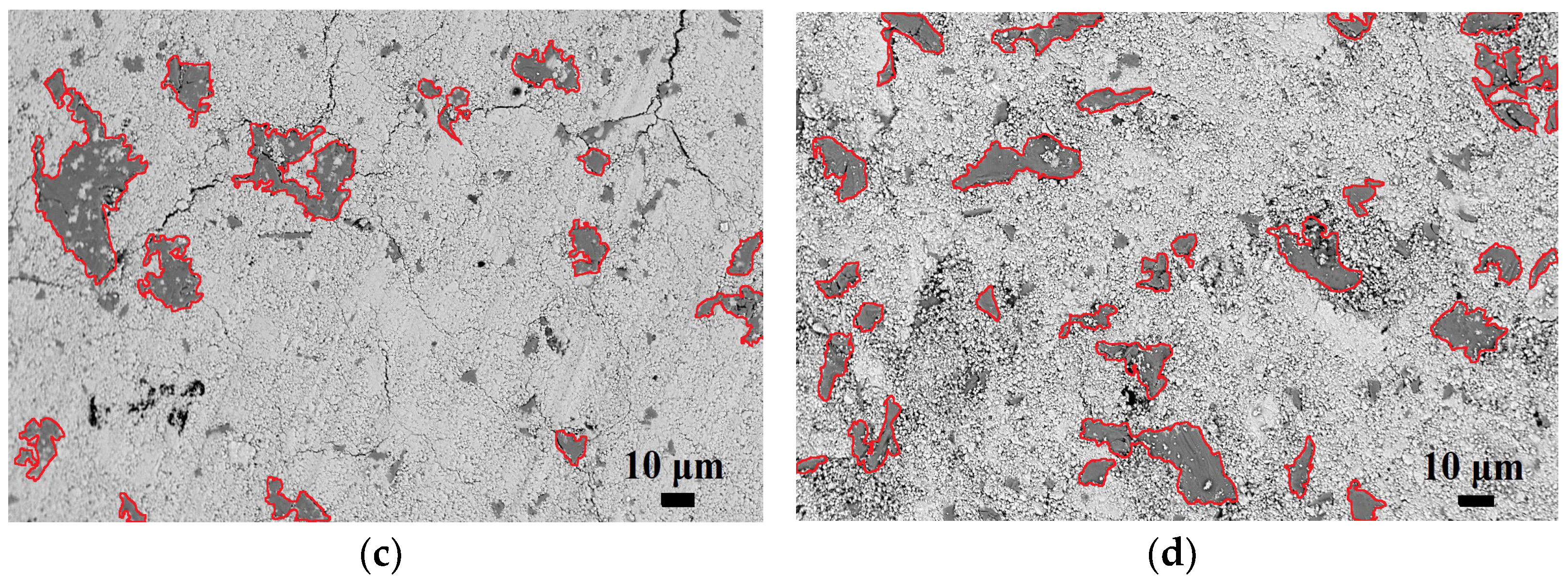
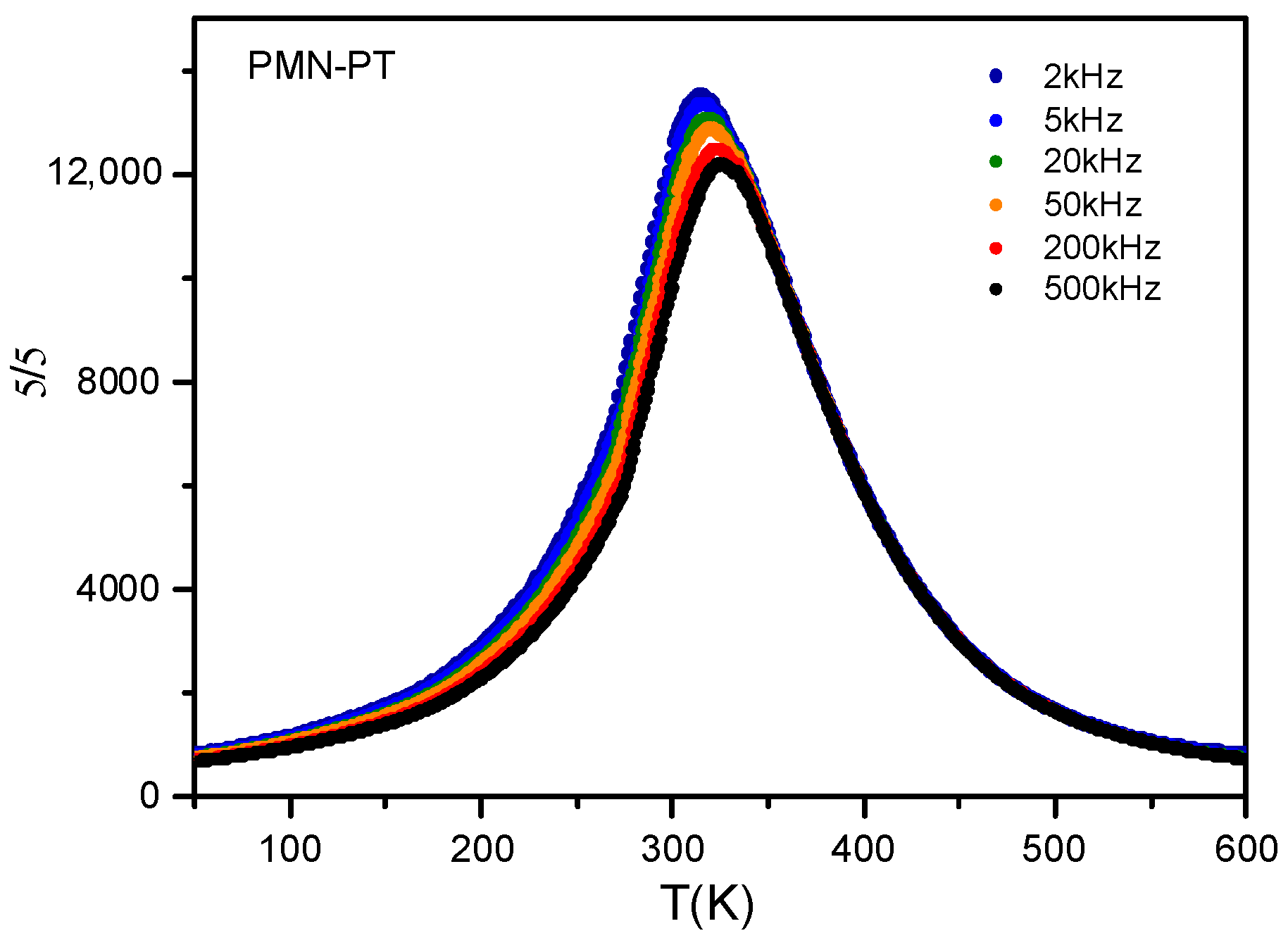
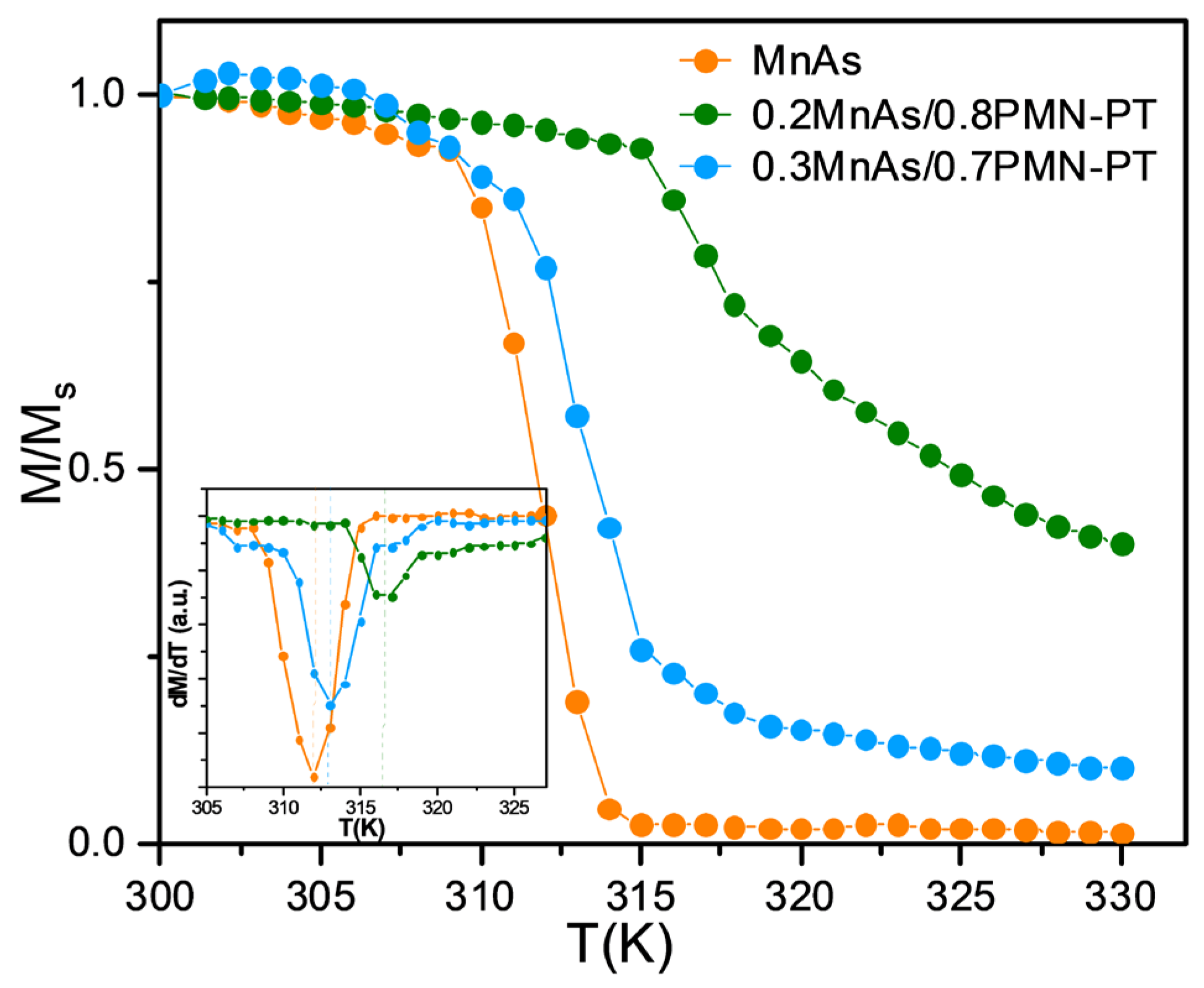
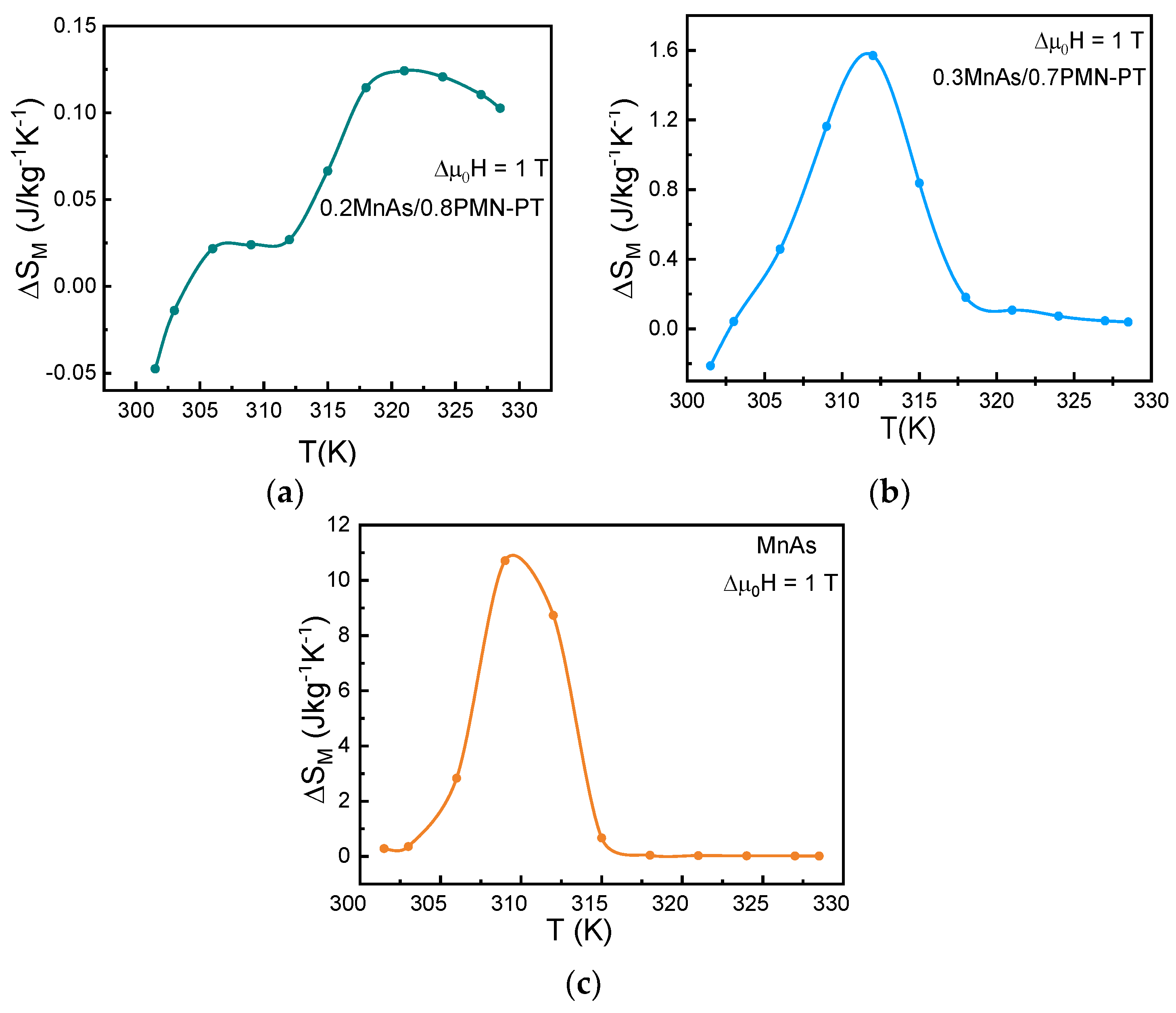


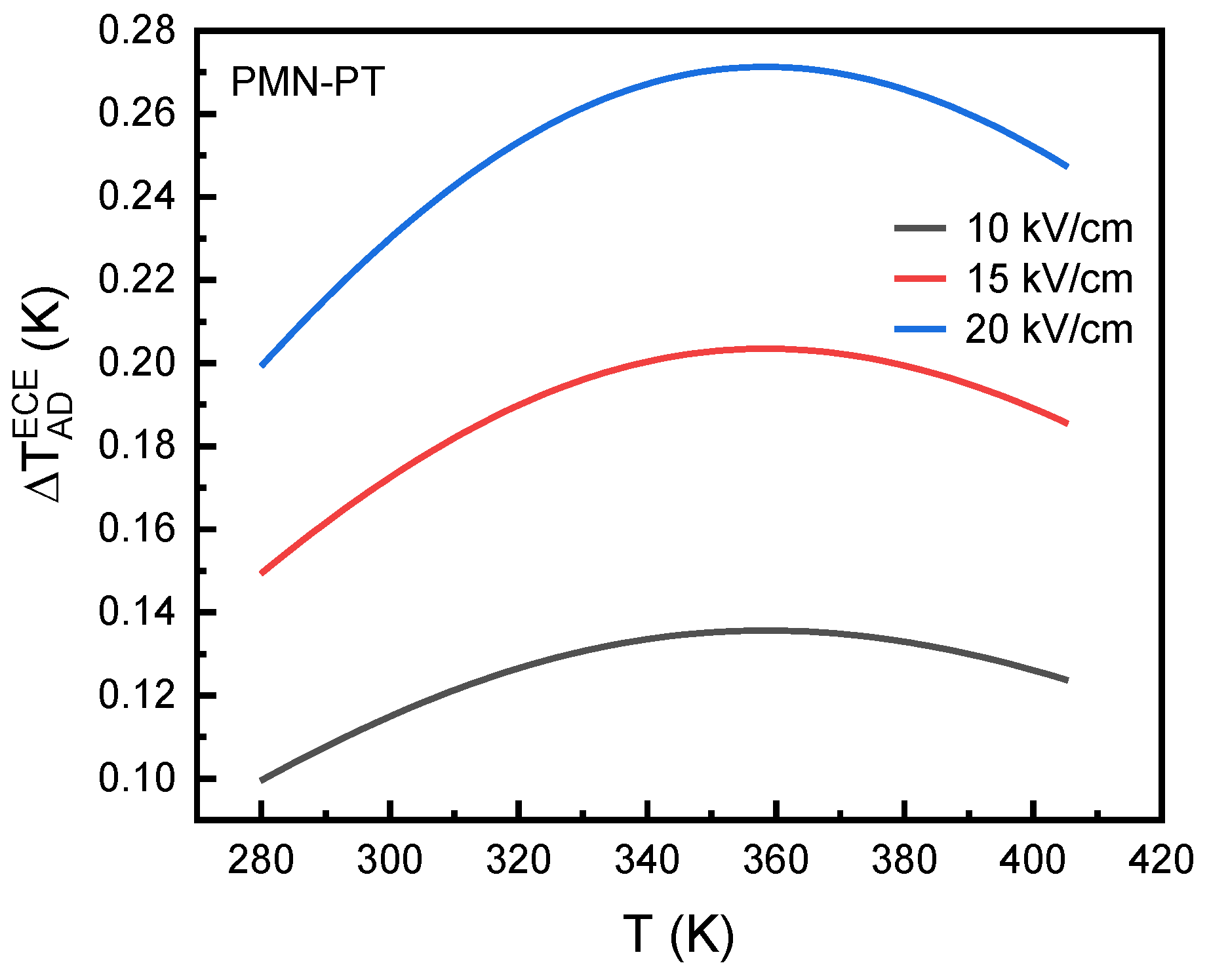




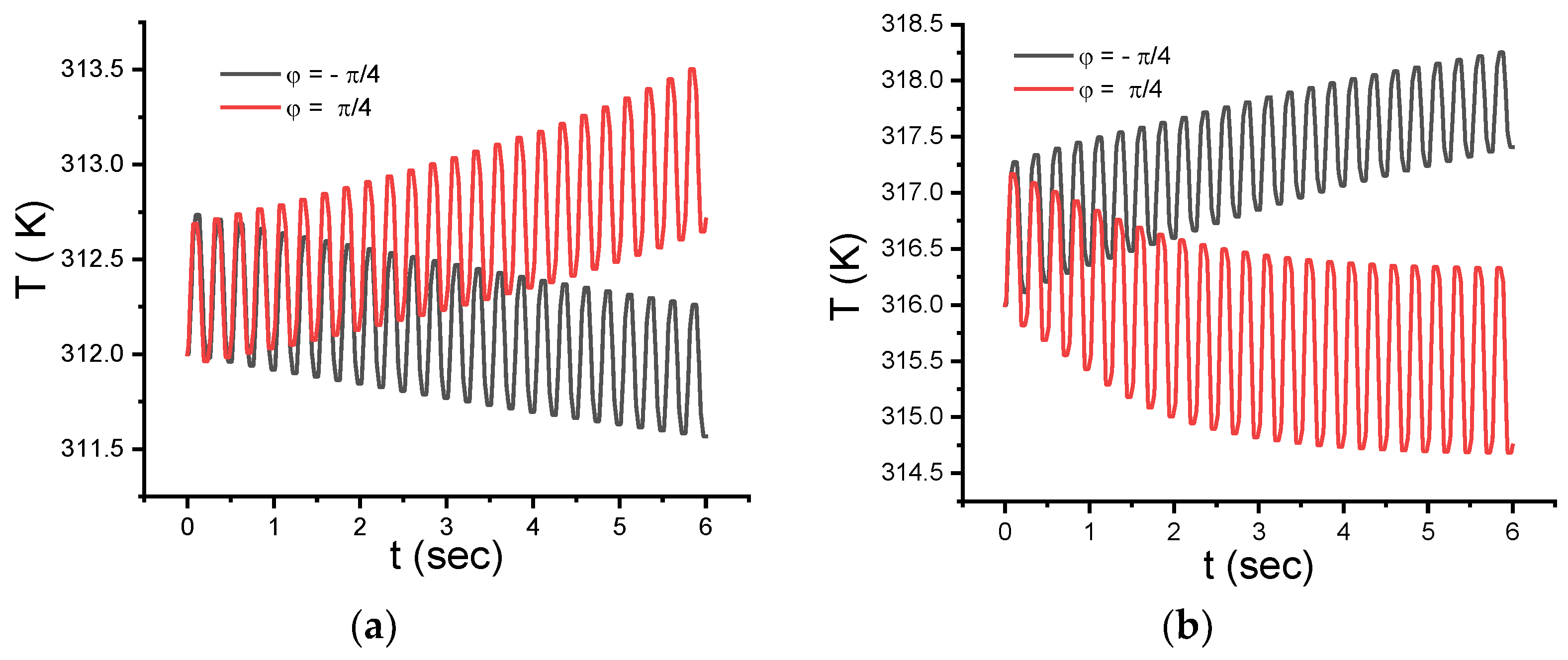
| ε | ε33T | tan δ | d33 (pC/N) | Kp | Qm | VE1 (km/s) |
|---|---|---|---|---|---|---|
| 10,220 | 10,150 | 0.065 | 100 | 0.14 | 364 | 3.48 |
| Components | ∆TADFE (∆E), K(kV/cm) | ∆TADFM (∆μ0H), K(T) | ρ, kg/m3 | Cp, J·kg−1K−1 | λ, W·m−1·K−1 |
|---|---|---|---|---|---|
| MnAs | – | 6.7 (4) (in our experiment) | 6310 [33] | 500–650 [47] | ~2 [48] |
| PMN–PT | 0.27 (20) (in our experiment) | – | 7560 (in our experiment) | 300–340 * (estimation from [49,50]) | ~1.3 * (estimation from [49,50]) |
| 0.3MnAs/0.7PMN–PT | - | 1.4 K (4) (in our experiment) | - | – | – |
Disclaimer/Publisher’s Note: The statements, opinions and data contained in all publications are solely those of the individual author(s) and contributor(s) and not of MDPI and/or the editor(s). MDPI and/or the editor(s) disclaim responsibility for any injury to people or property resulting from any ideas, methods, instructions or products referred to in the content. |
© 2023 by the authors. Licensee MDPI, Basel, Switzerland. This article is an open access article distributed under the terms and conditions of the Creative Commons Attribution (CC BY) license (https://creativecommons.org/licenses/by/4.0/).
Share and Cite
Amirov, A.A.; Anokhin, A.S.; Talanov, M.V.; Sokolovskiy, V.V.; Kutzhanov, M.K.; Huang, H.; Reznichenko, L.A.; Es’kov, A.V.; Aliev, A.M. Multicaloric Effect in 0–3-Type MnAs/PMN–PT Composites. J. Compos. Sci. 2023, 7, 400. https://doi.org/10.3390/jcs7090400
Amirov AA, Anokhin AS, Talanov MV, Sokolovskiy VV, Kutzhanov MK, Huang H, Reznichenko LA, Es’kov AV, Aliev AM. Multicaloric Effect in 0–3-Type MnAs/PMN–PT Composites. Journal of Composites Science. 2023; 7(9):400. https://doi.org/10.3390/jcs7090400
Chicago/Turabian StyleAmirov, Abdulkarim A., Alexander S. Anokhin, Mikhail V. Talanov, Vladimir V. Sokolovskiy, Magzhan. K. Kutzhanov, Houbing Huang, Larisa A. Reznichenko, Andrey V. Es’kov, and Akhmed M. Aliev. 2023. "Multicaloric Effect in 0–3-Type MnAs/PMN–PT Composites" Journal of Composites Science 7, no. 9: 400. https://doi.org/10.3390/jcs7090400






